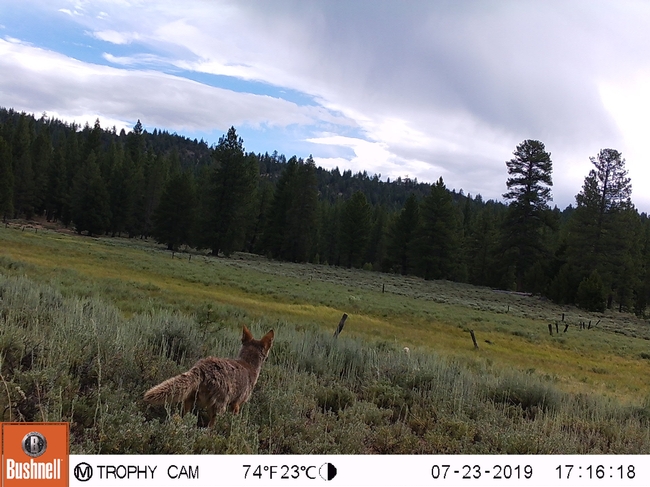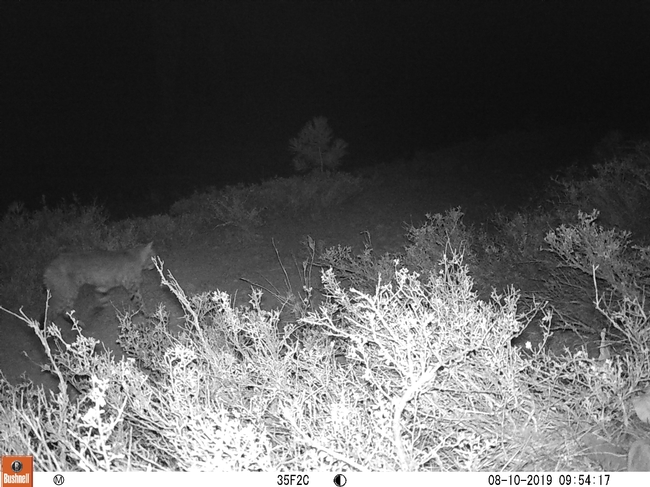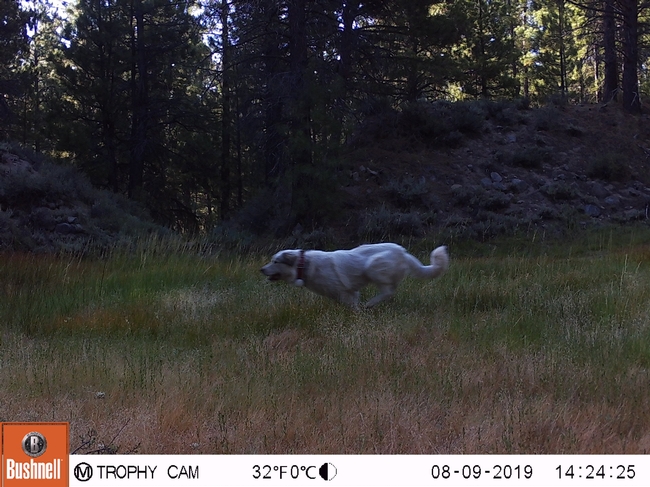When we first started using livestock guardian dogs nearly 15 years ago, I often joked that we our sheep operation was "predator-friendly" because our dogs were not. In other words, the protective behavior of our dogs allowed us to avoid using lethal control on coyotes, mountain lions, and other predators in our environment. And in those 15 years, knock on wood, we've never had to kill a predator. This isn't to say we wouldn't use lethal control if we came upon a predator killing our sheep, but our dogs (for the most part) seem to be doing their jobs.
California now has a predator (the gray wolf) that is protected under both the State and Federal Endangered Species Acts. Under both laws, it is illegal to "harm or harass" a wolf - and lethal control (at least in California) is not an option (even if a wolf is killing livestock). Consequently, the potential interaction between LGDs and wolves takes on new implications - could a rancher whose dog injured (or even killed) a gray wolf be held liable for "taking" an endangered species? Would the California Department of Fish and Wildlife, which recommends LGDs as a non-lethal livestock protection tool in wolf country, actually prosecute such a case?

More than two-thirds of these dogs had no reported interactions with wildlife. Of the 71 dogs that did interact with wildlife, 48% interacted with herbivores, while 73% interacted with predators. Just 9% had lethal interactions with herbivores (where the herbivore was killed); 10% had lethal interactions with predators. All of the documented interactions between LGDs and predators (a total of 44 instances) were defensive in nature (in other words, the predator approached the herd and the dog responded). Ultimately, the authors conclude, "Overall, the conservation benefit of LGDs does not appear to be outweighed by ethical implications of their use; LGDs were shown to be highly targeted and discriminatory towards predators attempting to predate on livestock." In other words, the LGDs in this study were effective at deterring predation while minimizing impacts on non-threatening wildlife.
I found this research especially interesting in light of my own observations of our LGDs and the LGDs used by other California operations. I've never witnessed a direct interaction between our dogs and a predator (which is why we're using GPS collars and trail cameras to try to document these encounters). In my 15 years of using these dogs, I've encountered 2 dead raccoons and 2-3 dead jackrabbits in our sheep paddocks, which I assume were killed by our dogs. I have also observed two of our dogs going after an otter (which is a much more vicious predator than I'd realized). I know that our dogs will respond when they hear coyotes howling in the distance, but I've never seen a direct confrontation.
Working with several range sheep operations this summer, I suspect that wildlife encounters may be more common in these unfenced, herded systems. The herders I've worked with report that the dogs are very active at night (as some of my trail cameras and the GPS data suggest).
I'm interested in learning from other producers - how do your LGDs respond to non-threatening wildlife versus predators? What kinds of things do you do to correct inappropriate behaviors? I hope you'll share your insights in the comments to this blog!
